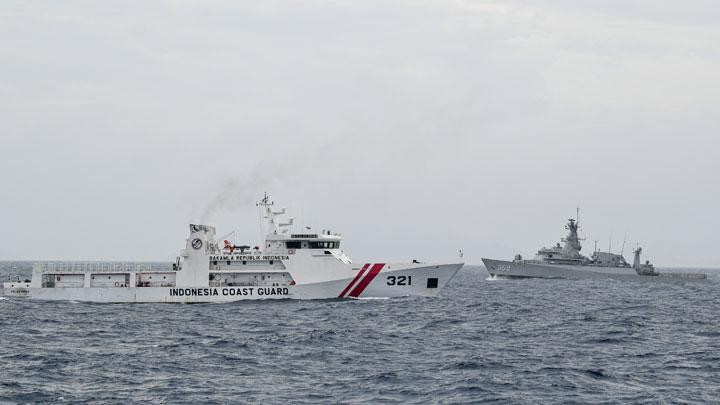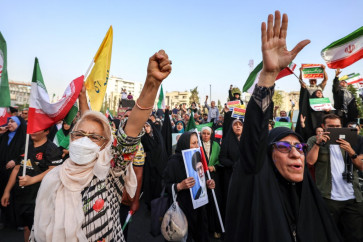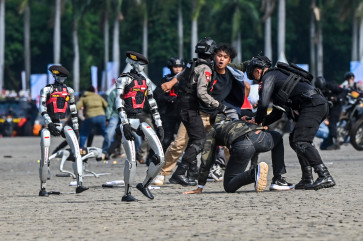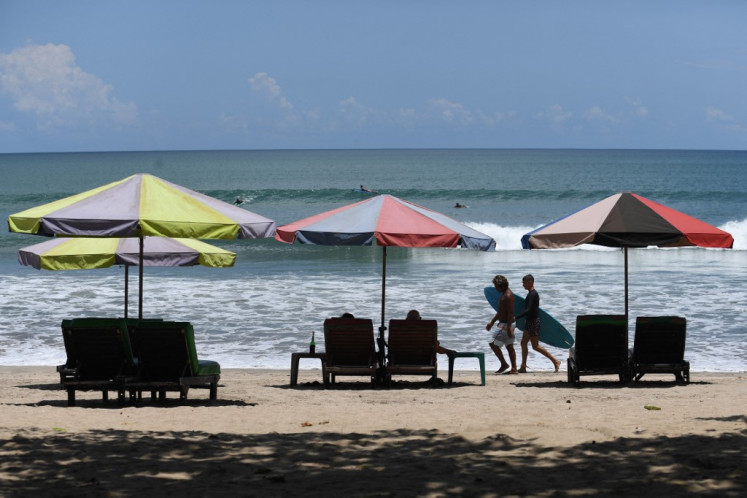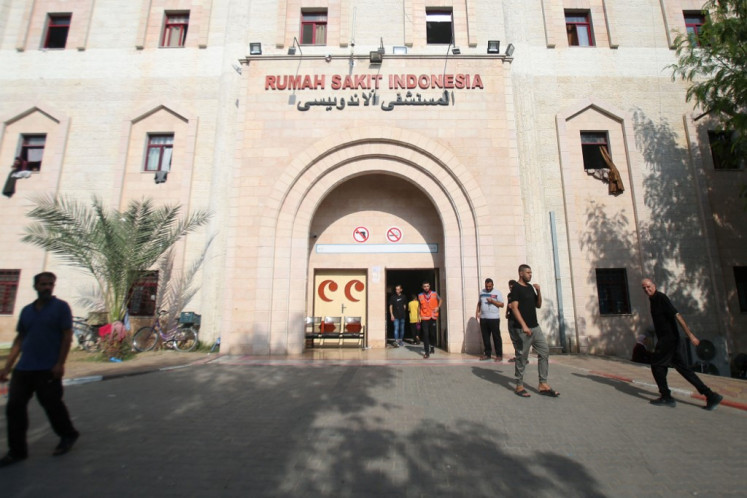Popular Reads
Top Results
Can't find what you're looking for?
View all search resultsPopular Reads
Top Results
Can't find what you're looking for?
View all search resultsTerritorial tussle over South China Sea
To whom does the EEZ area in the North Natuna Sea belong?
Change text size
Gift Premium Articles
to Anyone
I
ndonesia is the world’s largest archipelagic nation. Encompassing much of the Malay archipelago, Indonesia has its share of maritime claims on the South China Sea within the area of the Natuna Islands. Indonesia has yet to resolve issues involving maritime boundary disputes with some of its neighbors, including Vietnam, Malaysia and China.
In April 2019, a video went viral in Indonesia showing an official Vietnamese fishing vessel, believed to have been conducting illegal, unregulated and unreported fishing (IUU Fishing) in Indonesian waters, ramming into the starboard broadside of Indonesian warship KRI Tjiptadi-381. The video angered many Indonesians and raised questions about national maritime sovereignty.
Recently, a number of Chinese fishing vessels and three Chinese coast guard vessels were reported to have entered the exclusive economic zone (EEZ) near what Indonesia now calls the North Natuna Sea. This has agitated Indonesian authorities, who have said China violated Indonesia’s sovereign rights in its EEZ. China may exercise freedom of navigation in the EEZ but may not fish in the waters legally. In response to the illegal activity, Jakarta issued a diplomatic protest against Beijing and deployed its warships to the North Natuna Sea to face China. China argued that the waters around Natuna had been their fishing grounds for generations, as the area was within its self-proclaimed nine-dash line.
So to whom does the EEZ area in the North Natuna Sea belong?
The 1982 United Nations’ Convention on the Law of the Sea (UNCLOS) has created a number of maritime zones with varying degree of jurisdiction exercised by coastal states. The UNCLOS provides that coastal states have sovereignty over their territorial seas extending up to 12 nautical miles from the baseline. Within the territorial sea, a coastal state has sovereignty and absolute power over its marine area, subsoil and airspace above.
Furthermore, a coastal state may make claims for an EEZ (which involves maritime waters) and continental shelf (seabed and subsoil underneath the sea) in maritime zones beyond 12 nautical miles up to 200 nautical miles measured from the baseline of the coastal state.
As far as EEZs and continental shelves are concerned, a coastal state may only exert sovereign rights to exploit living and non-living resources in that particular maritime zone. Unlike in the territorial sea, foreign ships may exercise freedom of navigation in the EEZs of another coastal state. A coastal state has much less power in its EEZs and continental shelves than in its territorial sea.
Indonesia has yet to entirely resolve its maritime boundary delimitation with Vietnam, particularly the EEZ between the two states in the North Natuna Sea. This creates a “grey area” where affected states may exert sovereign rights. The territorial confusion creates a “blame game” where both states may claim they have jurisdiction over the “grey area”.
In the face of such uncertainty, Article 74 of UNCLOS 1982 provides that states shall make every effort to enter into practical provisional arrangements, which will serve as a temporary settlement until the boundary line is discussed and properly fixed by both nations. A very good example of the application of Article 74 of UNCLOS 1982 was a Memorandum of Understanding (MOU) signed in 2012 between Indonesia and Malaysia on the maritime boundary delimitation in the Strait of Malacca, where the EEZ boundary line has yet to be fixed.
Unless Vietnam and Indonesia properly resolve maritime disputes involving EEZ claims in the North Natuna Sea, the area is open to be claims by both nations. Indonesia has the right to send its vessels to carry out naval patrols while Vietnam may conduct activities allowed by UNCLOS in areas it considers part of its EEZ.
China on the other hand does not claim maritime areas around Natuna as its EEZ but as part of its historic waters within its “nine-dash line”. This is the reason that China believes it has the right to fish there. The “nine-dash line” was rejected by the Permanent Court of International Arbitration in 2016, which held that the line was against the spirit of UNCLOS 1982.
The territorial tussles between Indonesia and Vietnam and recently with China are uncalled for. It is a fact that the Southeast Asian claimant states of Indonesia, Vietnam, Malaysia, Brunei and the Philippines do not possess the resources or capacity of China in asserting their territorial integrity in the South China Sea. As such, these nations should put their differences aside to face China and finalize the Code of Conduct on the South China Sea.
The South China Sea should be reserved for peaceful purposes and any conflicts must be mitigated to ensure that the spirit of UNCLOS 1982 is upheld and respected.
***
Dhiana Puspitawati is an associate professor at the Faculty of Law, Universitas Brawijaya, Malang, East Java, and heads the Indonesian Center of Ocean Governance. M. Hazmi Mohd. Rusli is an associate professor at the Faculty of Syariah and Law, Universiti Sains Islam Malaysia, Negeri Sembilan.

